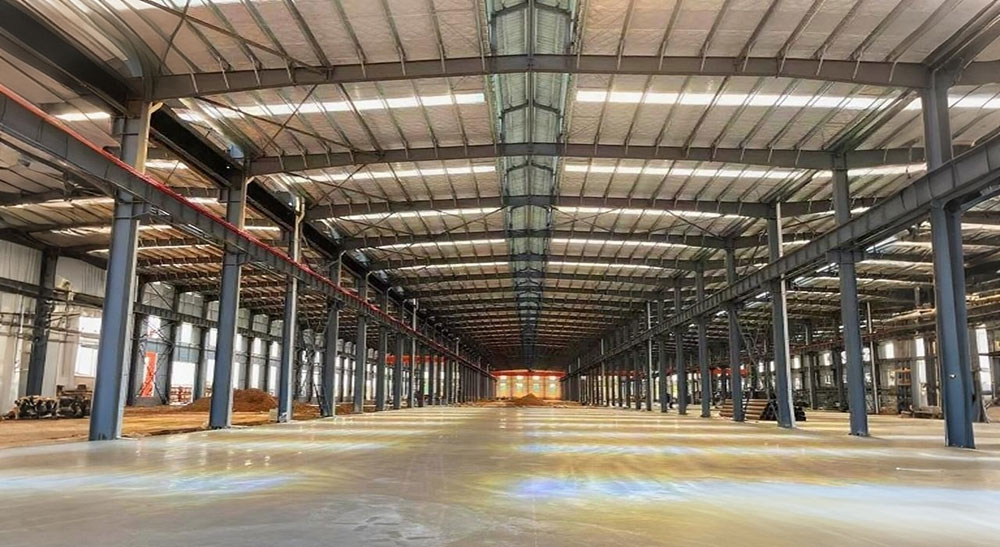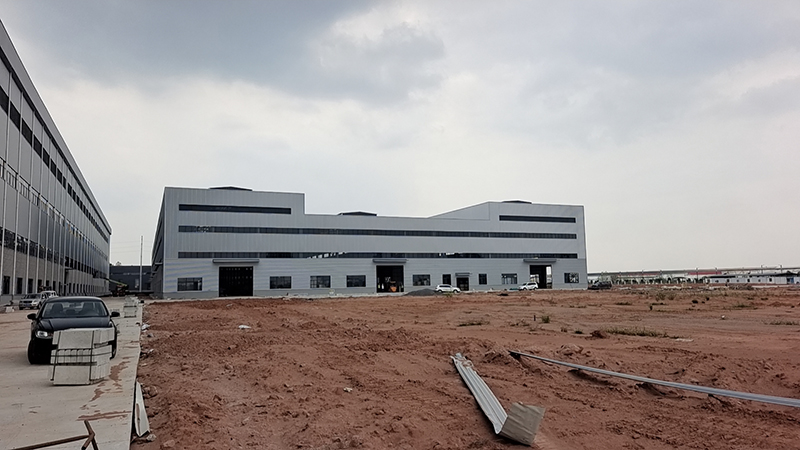What is a steel structure factory building? What are its structural types?
Steel structure factory refers to an industrial building formed by a load-bearing system composed of steel columns, steel beams, roof trusses, and other components, in conjunction with enclosure structures (such as color steel plates or brick walls). According to span and load, it can be divided into two categories: light (such as logistics warehouses) and heavy (such as metallurgical workshops). At present, most steel structure workshops use portal steel frames combined with space truss technology. XTD Steel Structure can produce small factories of 30*50 to large-scale heavy workshops stretching for several kilometers according to design requirements. The maximum span can reach 120 meters without support, and the addition of truss beams is suitable for heavy machinery manufacturing, logistics warehousing, and other scenes. The A36 steel main frame ensures earthquake resistance of level 8, and the crane beam system has a bearing capacity of 50 tons, which can achieve rapid assembly.
How to classify steel structure factories?
Steel structure factories can be divided according to the type of structure: single-span (Figure 3-1a), double-span (Figure 3-1b), multi-span (Figure 3-1c), rigid frame.
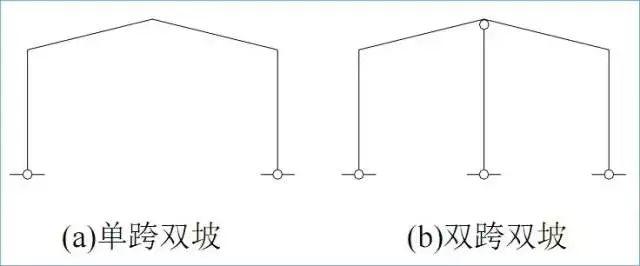
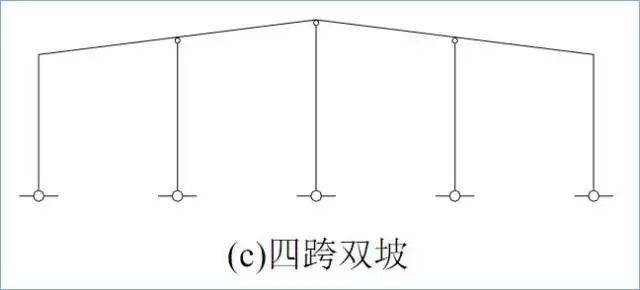
It can also be divided into single-slope, double-slope, triple-slope, quadruple-slope and even multi-slope roof structure forms according to the top slope.
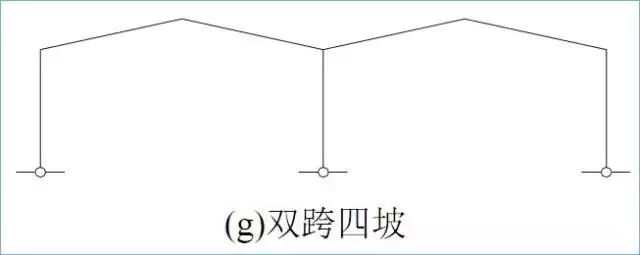
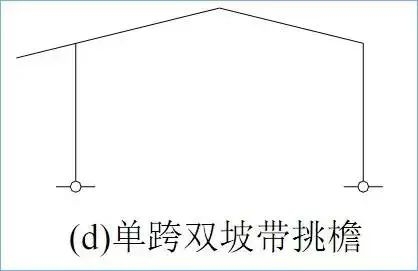
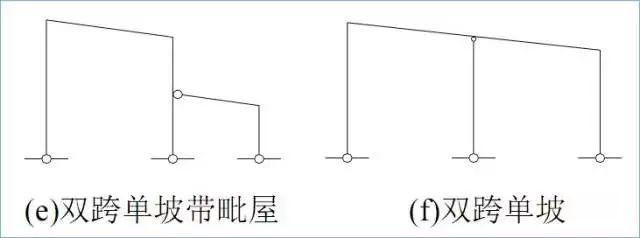
Thus, the optimal steel structure plant design can be tailored to meet specific operational needs.
Single-span steel structure factory building
Single-span steel structure factory building has only two support points in the horizontal direction (such as two rows of steel columns), and the span is usually 12-40 meters. Single-span steel structure factory building can also be subdivided into single-span single-slope grade, single-span double-slope steel structure factory building.
Characteristics of a single-span steel structure factory building:
Simple structure, low cost (unit cost is about 800-1200 yuan/㎡)
- Suitable for small and medium-sized production lines, such as electronic assembly workshops
- Ventilation/fire passages must be reserved (passage width ≥ 4m)
Double-span steel structure workshop
Double-span steel structure workshop has three horizontal support points (three rows of steel columns) to form a continuous two-span structure.
Features of the double-span steel structure workshop:
Space utilization rate increased by 30%, suitable for logistics sorting centers and other scenes
- The seismic design of the middle column needs to be strengthened (according to GB50011-2025)
- Typical case: Amazon logistics warehouse (double span + cantilever design)
Multi-span steel structure workshop
Multi-span steel structure workshop has more than three horizontal support points (such as four rows of steel columns forming three spans), and the span combination is flexible (commonly 6-40 meters/span, and the span can also be customized according to specific requirements).
Characteristics of a multi-span steel structure workshop
- The space utilization rate is more than 50% higher than that of a single span. A three-span linkage layout is common in logistics centers.
- According to the height, it can also be divided into equal-height multi-span (such as a storage center) and unequal-height multi-span (such as a metallurgical workshop)
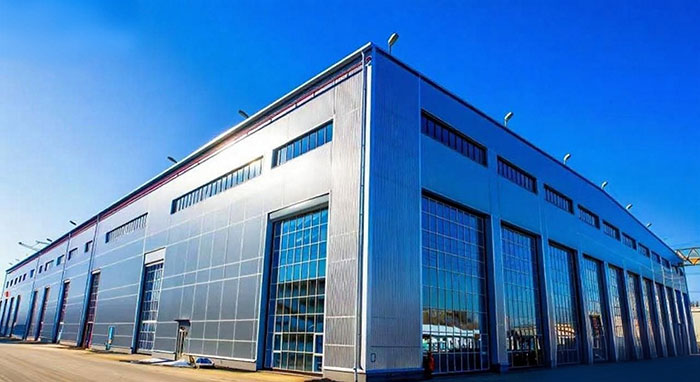
Differences and characteristics of single-span, double-span, and multi-span steel structure workshop
| Comparison Dimensions | Single-span workshop | Double-span workshop | Multi-span workshop (three spans and above) |
| Structure Definition | Two rows of horizontal pillars (span 12-40m) | Three horizontal rows of pillars (two-span combination) | Four or more rows of pillars (multi-span continuous combination) |
| Space Utilization | Low (channel accounts for about 25%) | Increase by 30% (reduce the exterior wall area) | Increase by more than 50% (three-span linkage is commonly used in logistics sorting centers) |
| Construction period | 40 days (6000㎡ standard) | 60 days | 90 days (modular synchronous installation) |
| Unilateral cost | 800-1200 yuan/㎡ | 1000-1500 yuan/㎡ | 1200-1800 yuan/㎡ (30% higher than single span) |
| Shock resistance | 8-degree fortification (excellent ductility) | The middle column node needs to be strengthened (8-degree defense) | The P-Δ effect is significant, and the risk of node stress concentration is high. |
| Applicable scenarios | Small and medium-sized production lines (electronic assembly) | Logistics sorting, medium-sized machinery manufacturing | Large aircraft manufacturing, a large-scale manufacturing workshop |
| Ventilation and lighting | Side windows are sufficient. | A partial skylight is required (lighting in the middle span is weak) | Forced skylight and ventilation system (poor lighting in the middle span) |
| Maintenance costs | Low (simple structure) | Medium (more connected nodes) | High (regular maintenance required) |
| Residual value rate | 90% (steel is easily recyclable) | 88% | 85% (component complexity affects disassembly) |
According to the layers, steel structure workshops can be classified into single-story, double-story, and multi-story workshops.
| Type | Structural features | Advantages | Typical application scenarios |
| Single layer | Eaves height 4-20m, no floor | Large span (up to 100m), crane load 200t | Heavy machinery manufacturing, metallurgical plants |
| Double Layer | Floor height 4.5-6m, steel frame + composite floor | The land utilization rate increased by 80%, and temperature control can be achieved in different layers. | Cold chain warehousing, precision instrument production |
| Multi-layer | 3-10 floors, flat rigid floor system | The plot ratio is three times that of a single-storey building, and the building is earthquake-resistant to 8 degrees | E-commerce smart warehouse, vertical farm |
Differences and characteristics of single-slope, double-slope, and multi-slope steel structure factory
According to the roof slope, it can also be divided into:
| Comparison Dimensions | Single-slope factory | Double slope factory |
| Roofing form | Single slope (high → low one-way drainage) | Double slope (ridge-centered, two-way drainage) |
| Span Applicability | Suitable for small and medium spans of 12-24m (slope length ≤ 24m) | Suitable for spans of 12-40m (slope length can be symmetrically distributed) |
| Steel consumption | 15%-20% higher than double slope (need to strengthen single-side support) | More economical (double slope structure has higher mechanical efficiency) |
| Drainage design | Only one side of the gutter is needed, but it is easy to overflow during heavy rain. | Double-sided gutter drainage to reduce eaves load |
| Lighting and ventilation | Relying on high side windows, poor lighting on the low side (artificial lighting is required) | The roof ridge can be integrated with ventilation towers to provide uniform natural lighting (illuminance increased by 30%) |
| Processing and installation technology | Suitable for places with high and low process requirements (such as logistics loading and unloading areas) or restricted sites | High degree of standardization, suitable for automated production line layout |
| Shock resistance | Uneven lateral stiffness, additional wind-resistant columns are required.d | The ridge node needs to be strengthened (Q355B steel + corner brace is used for 8-degree fortification) |
| Construction period (6000㎡) | 45 days | 40 days |
| Maintenance costs | High (dance corrosion concentration) | Low (evenly distributed corrosion) |
| Residual value rate | 85% | 90% |
Typical cases:
- Single slope: A cold chain warehouse (process requirements 8m/5m height difference)
- Double slope: Tesla Gigafactory (36m span + photovoltaic roof)
Design suggestions:
- In areas with annual rainfall > 800 mm, double slopes are preferred (to reduce the risk of leakage).
- When a crane of more than 20t is required, the double slope structure is more stable.le
How are steel structure plants usually manufactured?
With the help of the latest design software in the industry, XTD Steel Structure uses BIM technology to batch manufacture and deliver large steel structure plant projects and modular assembly technology. This means that at the 3D design and modeling stage, all components to be manufactured have been 100% coded, and the manufacturing process is monitored from the source. Our prefabricated steel structure manufacturing plant has a 15-day fast delivery capability and provides a dual-track solution based on the integration capability of the entire industrial chain of steel structure processing. For standardized and economical steel structure buildings, through universal design, material loss is reduced, and delivery is fast, with a monthly supply capacity of more than 6,000 tons and a monthly supply capacity of more than 4,000 tons for a single project. For high-end customized steel structure factory, we use BIM technology to work together, use the latest laser cutting machines and fully automatic welding robots, and can control accuracy error to ≤2mm.
The factory prefabrication rate of core components (mainframe, enclosure system, and connectors) reaches 95%, and the overall construction period is compressed by 40% compared with traditional production processes, helping customers achieve the dual goals of rapid production and cost control.
What are the advantages and characteristics of steel structure plants compared to concrete plants?
Steel structure workshops have advantages over traditional workshops in several dimensions:
| Dimensions | Steel structure plant | Traditional concrete plant |
| Structural strength | The tensile strength of steel is 400- 550MPa, 100 times that of C30 concrete. | Good compressive strength, but only 2-5 MPa in tensile strength |
| Shock resistance | Excellent ductility, can withstand 8-magnitude earthquakes (over 70% of Japan’s high-intensity areas) | Rigid structures are prone to cracking, and the seismic intensity is usually ≤7 degrees.s |
| Span Capability | The column-free span can reach 100m (aircraft hangar case), and the space utilization rate is increased by 8% | Requires dense columns (column spacing is usually ≤8m), limited space division |
| Construction accuracy | Factory prefabrication error ±2mm, node ultrasonic flaw detection | On-site casting is prone to 5-10mm dimensional deviation. on |
| Unilateral cost | 1200-1800 yuan/㎡ (including foundation) | 1500-2200 yuan/㎡ (including maintenance) |
| Construction period (6000㎡) | 1 month | 6-8 months |
| Residual value rate | 90% (steel is recyclable) | ≤30% (mainly construction waste) |
| Renovation cost | Modular disassembly reduces costs by 50% | Requires blasting and demolition, high cost |
| Environmental protection | Each ton of scrap steel reduces 1.6 tons of CO2 emissions and construction noise by 50% | Demolition generates 1.2 tons/㎡ of construction waste. |
| Fire performance | Spray fire retardant coating to a 2.5-hour fire resistance limit.t | Natural fire resistance for 1.5 hours, but prone to bursting at high temperatures |
| Corrosion performance | Galvanized layer + anti-corrosion coating (lifespan 20 years) | Chloride ion corrosion causes steel bar corrosion. on |
| Settlement requirements | Laser positioning is required (error ±2mm) | Sensitive to uneven settlement |
What are the usage scenarios of steel structure workshops?
For the special needs of steel frame buildings, XTD Steel structure design can cover flexible solutions for single-slope steel buildings, multi-story steel buildings and steel platforms. The space frame structure can be adapted to scenarios such as new energy workshop, electronic clean plant, etc. The steel roof frame integrates intelligent ventilation and photovoltaic roofing system, realizing a 30% reduction in energy consumption.
Steel structure buildings are widely used in various industries, We list a small number of specific use scenarios for reference:
| Manufacturing | ||
| Manufacturing workshop | Assembly workshop | Chip clean room |
| Robot assembly workshop | 3C electronic product production line | Home appliance manufacturing production line |
| Precision instrument processing center | CNC machine tool production workshop | Injection Molding Plant |
| Energy and Environmental Protection | ||
| Photovoltaic module production plant | Wind turbine assembly base | Energy storage battery packaging workshop |
| Waste-to-energy plants | Wastewater treatment plants | Hydrogen storage tank manufacturing plant |
| Garbage disposal station | Equipment maintenance workshop | Power transmission and transformation equipment plant |
| Transportation, logistics, ICS, and warehousing | ||
| Intelligent three-dimensional warehouse | Cold Chain Logistics Center | Cross-border bonded warehouse |
| Express sorting center | Air cargo distribution base | Automated unmanned warehouse |
| Dedicated storage for hazardous chemicals | Aircraft maintenance hangar | Car 4S shop repair workshop |
| Agriculture and Food | ||
| Modern livestock and poultry farms | Fruit and vegetable pre-cooling processing center | Central Kitchen Food Factory |
| Wine fermentation workshop | Aseptic filling plant for dairy products | Grain storage warehouse (steel silo) |
| Cultural, sports, entertainment, and commercial services | ||
| Sports stadium (openable and closable roof) | Film and TV shooting base | Sports venues |
| Hypermarket | Large shopping malls | Convention and Exhibition Center |
| Special Purpose | ||
| Data center modular computer room | Hospital | Military equipment maintenance depot |
How long is the expected service life of a structural steel plant? What factors affect the service life?
According to the Chinese Steel Structure Design Code, which takes 50 years as the load statistical benchmark period, the probability of a normally designed steel structure being damaged by load within 50 years is extremely low. It can be used for 50-70 years under regular maintenance, and non-production steel structure plants can be used for up to 80 years. Some steel structure plants that use long-term anti-corrosion technology can be used for nearly 100 years.
Regular predictive maintenance with BIM+ can extend the service life by 15%-20%. In specific use, the service life is closely related to the steel material, anti-corrosion coating, and manufacturing quality used in the initial design:
| Category | Specific Factors | Impact Mechanism |
| Materials and Process | Steel grade (such as Q355B), galvanized layer thickness (≥80μm), welding quality (ultrasonic flaw detection pass rate) | High-strength steel + hot-dip galvanizing can increase service life by 30% |
| Environmental conditions | Coastal salt spray (corrosion rate is three times that of inland areas), industrial acid gas (SO₂), humidity (>80% accelerates rust) | Without protection, the lifespan of coastal areas may be shortened to 25-30 years.s |
| Protective measures | Anti-corrosion coating (epoxy zinc-rich + polyurethane topcoat), fire retardant coating (thick coating fire resistant for 2.5 hours), cathodic protection | Regular maintenance can extend the service life to more than 70. years |
| Load and use | Dynamic load (such as frequent crane operation), over-design load use | Fatigue stress can reduce life expectancy by 40% |
| Maintenance Management | Anti-corrosion inspection every 5 years, structural inspection every 10 years (laser measurement of deformation) | Under standard maintenance, the corrosion depth can be controlled within 0.4mm/10 years. |

